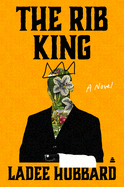
The Rib King is every bit as inventive and original as Ladee Hubbard's confident debut, The Talented Ribkins, finding the tragedy and the bitter humor contained within the American obsession with Black iconography. The novel begins in 1914 with Mr. Sitwell, a member of the all-Black staff that holds together a wealthy white family's household as their fortunes fade. The novel's interest in the connection of race and capitalism is evident at the outset, but the book is equally concerned with the ways narratives are shaped to disguise the sins of the past. Mr. Sitwell begins to lose his signature composure when he discovers a book recounting events disturbingly similar to a horrific incident in his childhood. What follows is one of the many unpredictable turns that makes The Rib King such an exciting read.
The second half of the novel picks up years later, when a caricature of Mr. Sitwell known as "The Rib King" has become the face of a wildly successful rib sauce. The "Rib King" iconography is reminiscent of many real-life examples of brands using racist archetypes like Aunt Jemima to sell products. Mr. Sitwell's transformation into caricature has made him an equivocal figure in the Black community. In one scene, a character argues that Sitwell is "just doing what he's got to, to survive," while another responds that "every time somebody acts a fool trying to slip in through a back door it makes it that much harder for all of us...."
That tension--the lack of clear-cut moral choices for people living under such brutal pressure--drives the book, but never resolves into simple dichotomies. Hubbard shows the monstrously strange methods through which a racist corporate world can recast suffering and injustice into profitable icons. --Hank Stephenson, the Sun magazine, manuscript reader

